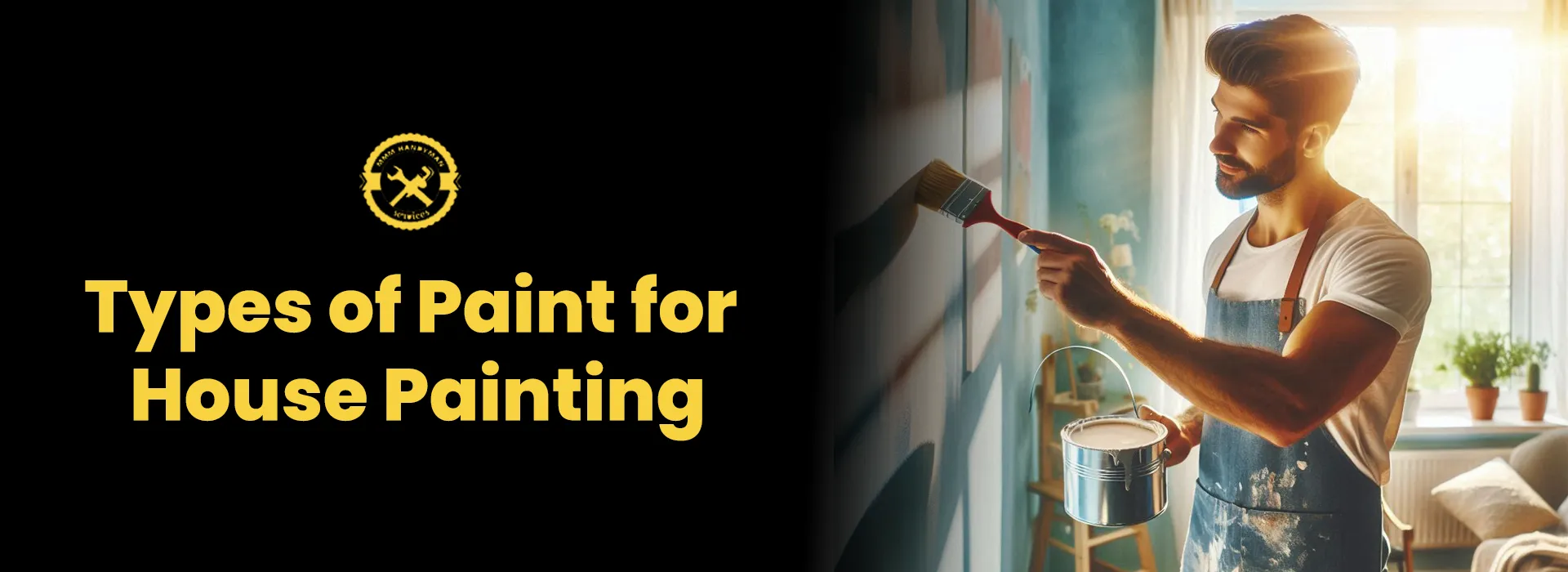
House Painting
When it comes to house painting , choosing the right type of paint is essential. This decision largely depends on the quality, texture, and purpose of the paint, as well as the specific needs of each room or surface. Here’s a breakdown of the most common types of paint used in home painting:
types of paints
- Plastic Paints
– Overview: Plastic paints are water-based and known for their quick drying time.
– Benefits: These paints are odorless, which makes them great for indoor use, particularly on ceilings and interior walls.
– Limitations: However, they’re not very resistant to moisture and can be difficult to clean, making them unsuitable for areas like kitchens and bathrooms.
- Oil-Based Paints
– Overview: Oil-based paints are durable and ideal for areas that may need frequent cleaning.
– Benefits: They are available in glossy, semi-matte, and matte finishes, offering a wide range of choices.
– Limitations: These paints tend to have a strong smell and take longer to dry, so adequate ventilation is necessary during application.
- Acrylic Paints
– Overview: Acrylic paints are also water-based but come with the advantage of being washable and more resilient than plastic paints.
– Benefits: They resist moisture and heat, making them suitable for humid areas such as bathrooms.
– Limitations: Acrylic paints dry quickly and have little odor, though they can be more expensive than other types.
- Multicolor Paints
– Overview: Multicolor paints offer a unique, textured finish that combines multiple colors, adding a creative touch to walls.
– Benefits: These paints are moisture-resistant and washable, making them a great choice for adding decorative accents in any room.
– Limitations: Applying multicolor paints can be a bit more challenging and may require a professional touch to achieve the desired effect.
- Epoxy Paints
– Overview: Epoxy paints are known for their exceptional durability, often used for surfaces that endure high traffic.
– Benefits: They are waterproof, shock-resistant, and chemically resistant, which makes them perfect for garage floors and industrial spaces.
– Limitations: Epoxy paints can be more labor-intensive to apply and typically require professional installation.
- Metallic or Glitter Paints
– Overview: These paints contain reflective particles that give walls a shimmering, metallic look.
– Benefits: They are ideal for adding a touch of glamor to rooms like living rooms or feature walls.
– Limitations: They may not be suited for entire rooms as they can be overpowering, and they often require a special base coat for the best results.
- Vinyl or PVC Paints
– Overview: Vinyl paints are durable, waterproof, and easy to clean.
– Benefits: This makes them excellent for areas that require frequent washing, like kitchens.
– Limitations: These paints can sometimes lack the breathability needed for certain surfaces, potentially leading to mold issues if improperly applied.
Key Considerations When Choosing Paint for House Painting
– Moisture Resistance: For spaces exposed to moisture, such as kitchens and bathrooms, select paints that are specifically formulated to withstand humidity and frequent cleaning.
– Surface Type: Different surfaces—wood, plaster, or metal—may require specific types of paint or primers to ensure proper adhesion.
– Preparation: In some cases, using a primer or an undercoat is necessary to achieve a smooth and long-lasting finish.
By carefully choosing the right type of paint, you can ensure that your house painting project will not only look great but will also stand the test of time.

